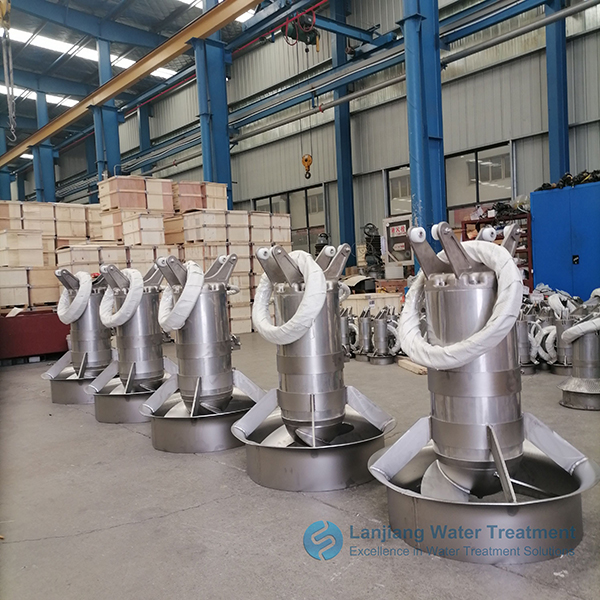When selecting a mixer in a sewage treatment plant, it is mainly determined according to the treatment process, sewage characteristics and treatment scale. The following are some common mixer types and their characteristics for sewage treatment plants to refer to when choosing:
1. Propulsion agitator:
- Suitable for large-scale sewage treatment plants.
- Has a powerful mixing effect and can effectively push and mix large amounts of sewage.

2. Paddle mixer:
- More suitable for smaller sewage treatment facilities.
- Simple structure, relatively easy to maintain.
3. Turbine agitator:
- Especially suitable for treating high concentration sewage.
- With strong shear force, it can break up large substances in sewage to achieve a more uniform mixing.
4. Screw stirrer:
- Mainly used to treat organic wastewater.
- The mixing effect is uniform, and the energy consumption is relatively low, which helps to save energy.
In specific applications, sewage treatment plants may also choose the following types of mixers according to actual needs:
- Low speed current pusher: usually equipped in oxidation ditch, oxygen pool, which is characterized by large blade (diameter is usually between 1000mm to 2500mm) and slow speed (35 to 135 r/min). This mixer can produce a wide range of pushing effect, and is also suitable for the maintenance of landscape water.
- High-speed submersible mixer: In order to prevent sludge sedimentation, this kind of mixer is used in oxidation ditch, anaerobic tank, anoxic tank, regulating tank and other areas. It is characterized by small impeller (diameter between 260mm and 960mm), faster speed (480~980 r/min), and better anti-precipitation effect in a small range.
- Vertical mixer: It is used more in the stage of coagulation and flocculation, the motor is located on the water surface, and the mixing is completed by 2 to 3 independent 3-blade blades (the blades are mostly made of strip slurry boards), the main role is to promote the effective precipitation of sludge.
In summary, when selecting a mixer in a sewage treatment plant, the treatment scale, sewage characteristics and treatment process requirements should be considered comprehensively to select the most suitable mixer type.
Post time:2024-07-02